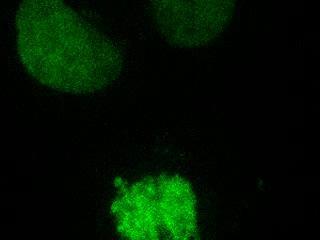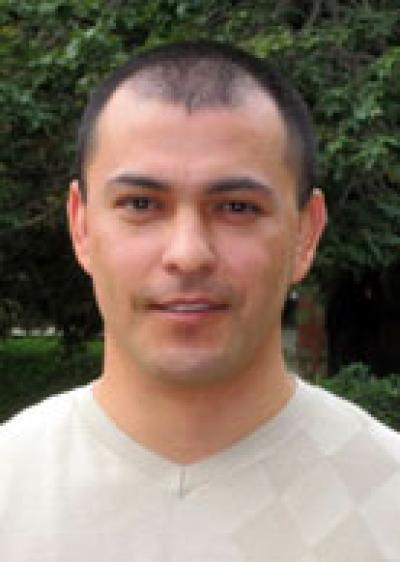Torres said there are some cancer clinical trials testing kinesin inhibitors, but so far they have not proved very successful. The inhibitors do stop cell division, but they don't damage the cell enough to induce a quick cell death and eventually the cells begin dividing again.
STARD9, however, not only arrests cells during division, it causes so much disruption in spindle formation and function that the cells die quickly. The cells, in effect, become too broken to repair themselves, Torres said.
"When STARD9 is depleted in the cancer cells, the chromosomes attempt to align for transmission into the daughter cells, but fail," he said. "They try for a while, but the chromosomes are being pulled apart from different directions and the DNA is tearing. In the end, their DNA condenses into a ball and the cells die."
Torres said researchers knew that STARD9 existed in cells from computational analyses, but no one had characterized its function until now.
The next step will be to confirm these findings in animal models by injecting mice with cancer cells and determining if depletion of STARD9 in these cells suppresses the formation of a tumor.
Torres is currently screening small molecules to find the ones that effectively inhibit STARD9s function. He's also conducting a molecular analysis of the protein and how it functions to form a proper spindle.
Finding a good STARD9 inhibitor could result in a new, less toxic combination therapy for certain cancers. Because depletion of the protein enhances the effectiveness of Taxol, Torres hypothesized that perhaps the chemotherapy drug, which causes many serious side effects, could be given in lower doses but perform just as well if used in combination with a STARD9 inhibitor.
"Our study highlights the utility of performing focused screens to understand cellular processes, as many of the genes we have identified as regulating mitosis (cell division) and apoptosis (cell death) were not identified in pervious genome-wide screens," the study states.

This is a cancer cell with depleted STARD9 in which the chromosomes are being pulled apart and the DNA is tearing, after which the cell dies
(Photo Credit: Jorge Torres)

This is scientist Jorge Torres, Ph.D.
(Photo Credit: UCLA)
Source: University of California - Los Angeles Health Sciences